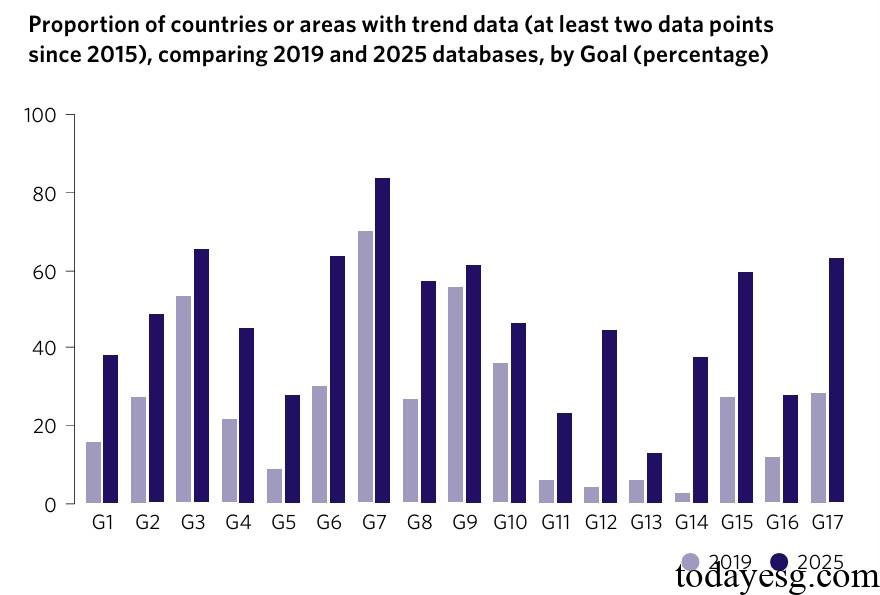2025 Sustainable Development Goals Report
The United Nations releases the 2025 Sustainable Development Goals report, which aims to summarize progress on 17 UN Sustainable Development Goals.
2025 is the tenth year since the United Nations Sustainable Development Goals were proposed. The United Nations has found that 35% of the goals are progressing according to plan, 47% are progressing slowly, and 18% are regressing.
Related Post: Introduction and Application of United Nations Sustainable Development Goals (SDGs)
Progress towards Sustainable Development Goals
Since 2019, overall progress has been made towards the Sustainable Development Goals, but there are still gaps in key areas. Goal 3: Good health and well-being, Goal 6: Clean water and sanitation, and Goal 7: Affordable and clean energy have made significant progress, while Goal 5: Gender equality, Goal 13: Climate action, Goal 14: Life below water, and Goal 16: Peace, justice, and strong institutions have lagged.

Measuring progress towards sustainable development goals relies on timely and comprehensive data systems. From 2015 to 2022, international data funding increased from $586 million to $875 million, but from 2023 to 2025, there has been an overall downward trend in data funding, which may have a negative impact on measuring sustainable development goals. More than 90% of household surveys in low-income countries rely on external funding, while in middle – and high-income countries, this proportion is about 20%. The reduction of data funding has a greater impact on the statistics and analysis of household related goals (such as Goal 2, Goal 3, Goal 5).
Progress on Sustainable Development Goal 13 Climate Action
2025 is the tenth year after the signing of the Paris Agreement and the deadline for jurisdictions to submit Nationally Determined Contributions (NDCs). As of June 2025, only 25 jurisdictions have submitted documents. According to the Emissions Gap Report 2024 released by the United Nations Environment Program (UNEP), global carbon dioxide emissions reached 57.1 billion tons in 2023, an increase of 1.3% compared to 2022 and higher than the average annual growth rate of 0.8% from 2010 to 2019. The current global warming path is 3.1 degrees Celsius. If we want to control it at 2 degrees Celsius, greenhouse gas emissions need to decrease by 4% annually before 2035. If controlled at 1.5 degrees Celsius, greenhouse gas emissions would need to decrease by 7.5% annually.
According to data from the World Meteorological Organization (WMO), the global temperature in 2024 is 1.55 degrees Celsius higher than preindustrial levels, making it the hottest year in 175 years. Based on average data analysis, the current temperature rise has reached 1.34 to 1.41 degrees Celsius, with a 10% increase from the Paris Agreement’s 1.5 degrees Celsius. It is expected that there is an 80% probability of higher temperatures occurring in the next five years, leading to more frequent and severe extreme weather. Although a temperature increase of over 1.5 degrees Celsius per year does not mean that the Paris Agreement cannot be achieved, the world needs to take more climate action to reduce the impact of climate change.

The direct economic losses caused by climate change are approximately $202 billion per year, and the total indirect economic losses exceed $2.3 trillion. The negative impact of climate change on developing countries is more than twice the global average. As of October 2024, 131 jurisdictions have developed national disaster risk strategies, and 113 jurisdictions have established disaster warning systems. These measures have a positive effect on reducing disaster exposure, and from 2014 to 2023, disaster mortality rates have almost halved.
Reference:
The Sustainable Development Goals Report 2025
ESG Advertisements Contact:todayesg@gmail.com








